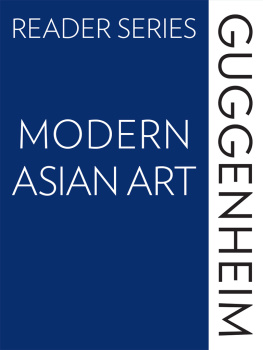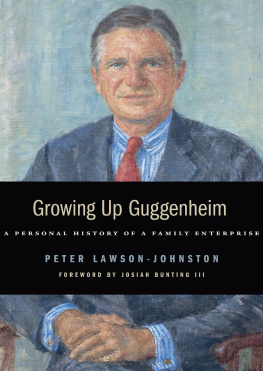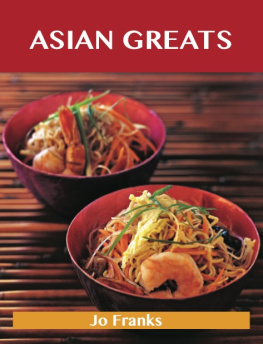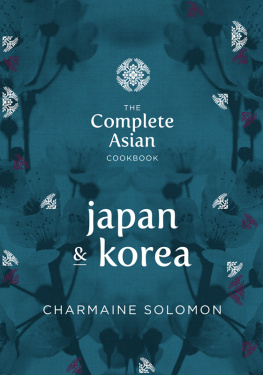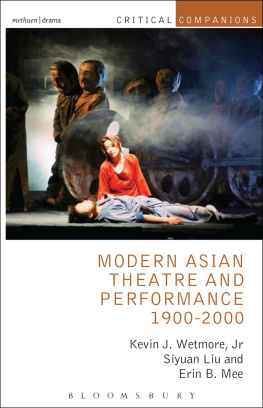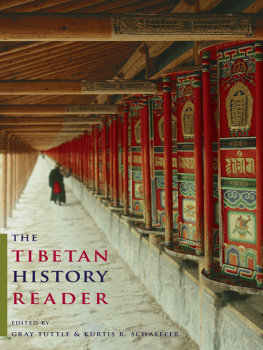Cai Guo-Qiang: I Want to Believe
Alexandra Munroe
Artists have a way of filling their work spaces with images and artifacts that have talismanic power, and Cai Guo-Qiang is no exception. A Chinese stone lion guards the entrance way to his large, garden studio in Manhattans East Village. A full-page newspaper advertisement reproducing a majestic El Greco painting is taped to a door, and a multipanel gunpowder drawing of an eagle with wings fully spreadCais Man, Eagle, and Eye in the Sky: The Age of the Eagle (2004)occupies a place of honor, watching over and blessing the studios activities. The most unexpected and arresting icon, however, is a poster depicting a UFO hovering in the sky above a bucolic landscape printed over with the words I Want To Believe.
Cais largest series of artworks to date is called Projects for Extraterrestrials. For the artist, imagining the existence of alien intelligence compels a contemplation of alternative, coexisting, or multiple realities that is akin to the function of art. The perception of art is an experience of believing in something that does not actually exist, or rather, exists as another reality. Along with the supernatural and UFOs, Cais work freely cites historical legends and folk myths, apocalyptic imagery and healing powers, the big bang and terrorist actsall utilized in different ways to suspend, provoke, and challenge our habits of mind. The slogan I Want to Believewhich unbeknownst to the artist was popularized by the television series The X-Files , captures the brilliant ambiguities at the core of Cais protean artistic practice.
Cai is best known for his use of gunpowder. Invented by the Chinese and called fire-medicine ( huoyao ), gunpowder is arguably Chinas single technological advance of the last millennium that has had truly global consequences. Cai mines this materials charged associations and has used it to create a radical new form and methodology of art. Explosives are central to his signature gunpowder drawings, which are made by laying gunpowder and fuses on fibrous paper and igniting them in a blast that creates charred residue of the original matter. Gunpowder is also the essential material for Cais spectacular explosion events, which are site-specific pyrotechnic displays, often on a monumental scale. Although his practice can be related to Conceptual art, performance, and Land art, Cai extends each art form toward a new matrix by operating outside conventional parameters. Where artists like John Cage, Chen Zhen, and Yves Klein have used fire, smoke, or burned matter to make objects of art, Cai uses explosives to directly manifest the pure force of energy, not to induce art but as an art form itself. While the intention of modernism and the avant-garde was the destruction of boundaries between art and life, his strategy to embody destruction itself shifts the conceptual framework to the blurring of boundaries between art and war. I make explosions, Cai has remarked, so I pay attention to explosions.
Inherent throughout Cais art are unstable structures of process and transition, doubt and ambivalence. For him, matter and energy are equally materialized and dematerialized. The transformations from one state to another are both the method and the meaning of his art. All states of a works creation, including its destruction, coexist in the work itself. This complete freedom from fixed form shapes a body of work that has evolved from studio paintings to interactive installations to visual extravaganzas for vast audiences. Cais subject matter ranges from Buddhist metaphysics to cosmological science, from ancient healing systems to contemporary car bombings, and what underpins his diverse practice is the core ideal that art linkif you want to believethe seen and unseen worlds.
The ideal of belief also generates the political dimension of Cais art. A socialist utopianism pervades his artistic strategies, and has led to using the term social projects to describe a range of work for which the allure of socialist memory and the idea of absolute faith in communitarian forces of historical progressanother kind of unseen worldare key to the artists process, imagination, and narrative. An ongoing aspect of this approach is Cais working method for producing explosion events and installations that requires dozens, even hundreds, of collaborators, including professional project teams, art-world volunteers, and local residents. More specifically, his social projects comprise the Everything Is Museum series for which he has produced MoCAs (museums of contemporary art) in remote sites, appropriating nonart structures such as military bunkers and old kilns. He assumes the role of curator and invites the participation of artists and the local public alike to install work and participate in his museum events. Cais infiltration of nonart spaces and local communities involves extraordinary logistical negotiations, relies on his considerable charisma and mobilization skills, including fund-raising, and is infused with an idealistic socialism that aspires to claim the public realm as a site for art of democratic empowerment. Critic and curator Hou Hanru has commented on similar ideals that have shaped artists who were born and raised in the early decades of Mao Zedongs China:
My generation of Chinese has been fighting for more fundamental issues of humanity. For us, the first necessity of art is never to return to the enclosure of the self. The second thing is to see how modernity rewrites the process of social transformation in different conditions, and then how it is visualized.
Cais exploration of the relationship between the individual and the collective society is best understood in the context of Chinas cultural and political memory, including its modern revolutionary historya context that sets his collaborative practice apart from his contemporaries in the West. Cais 2006 participation in the Long March: A Visual Walking Display exemplifies how he has become increasingly interested in interrogating and reimagining the history and social idealism of early Chinese communism.
Ironically, it is precisely Cais social optimism recalled from revolutionary history that is now in the service of Chinas postrevolutionary state. The opening and closing ceremonies he is collaborating on for the Beijing 2008 Olympic Games will be spectacles of unprecedented mass outreach, with an estimated audience of four billion television viewers. His faith in the global language of art to provoke critical wonder among the broadest populations adds another level of idealistic meaning to the words on the poster, I Want To Believe. Critic Philip Tinari has commented, In a way, his elevation to such a public role was only possible because his kind of belief is somehow palatable to this group of leaders and the way they want their national project to be seen.
Taped to another wall of Cais studio is a front-page article from the arts section of the New York Times in which critic Holland Cotter discusses Light Cycle: Explosion Project for Central Park (2003):
This is the stuff of a visionary, but unmystical art; complex in ideas, but tailored to a universal citizenry. In a world where politics, culture and nature are all unstable compounds, and everyone lives tensed in expectation of the next Big Bang, such art, like a throw of the I Ching, comes across as a judicious but exhilarating act of the faith in the benignity of the unknown.
Critical Histories
The question of whether Cai is a global artist first and a Chinese artist second, or vice versa, has generated considerable confusion among art critics. He has consistently challenged this binary. By complicating, dodging, and deftly deflating the facile categorization of his work, Cai has contributed to this questions waning critical relevance in contemporary global art discourse. He was born in China in 1957 but has lived and worked outside the country since 1986. Until recently, he was associated with the phenomenon of overseas Chinese artists and was relatively unconnected to Mainland China. Cai was peripheral to the 1980s avant-garde movements, such as the Stars group, 85 New Wave, or Xiamen Dada, and did not participate in the historic China/Avant-Garde exhibition at the National Art Museum of China in 1989.
Next page
